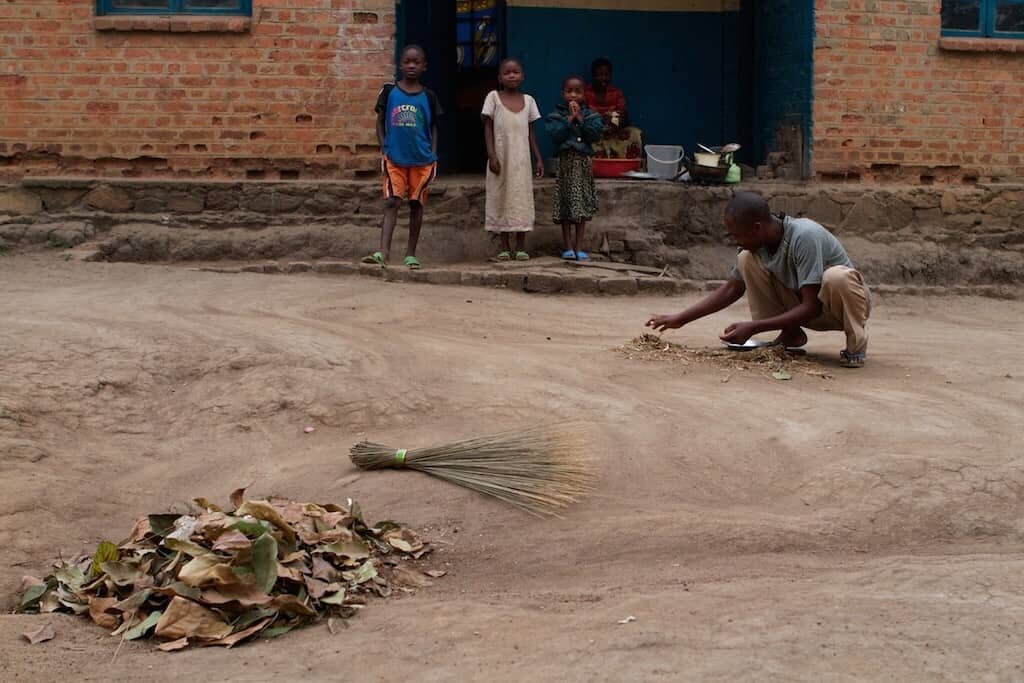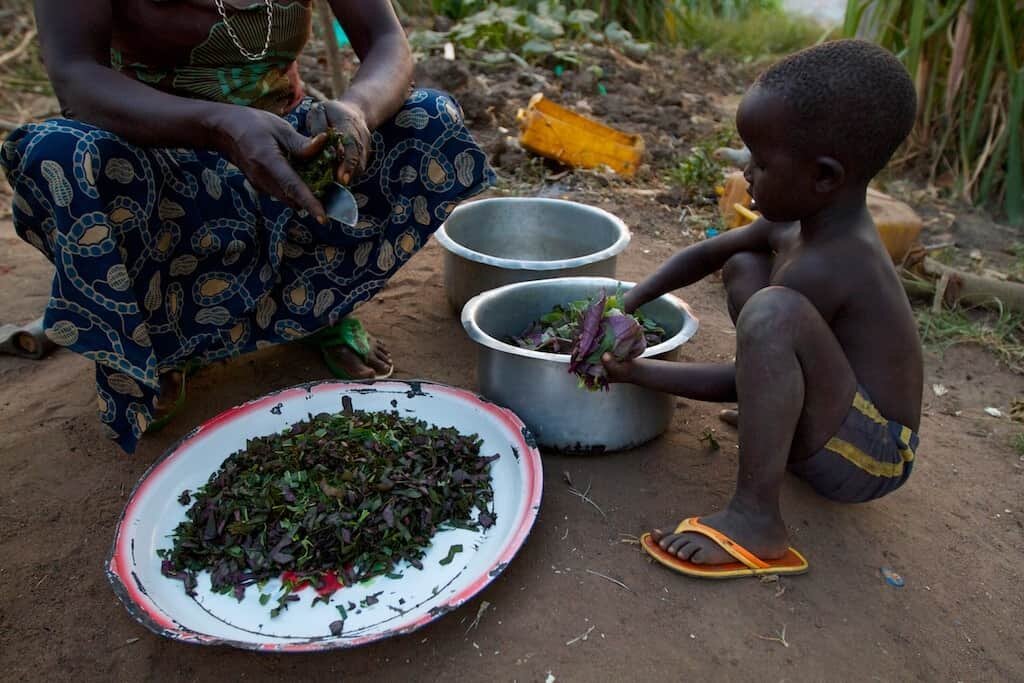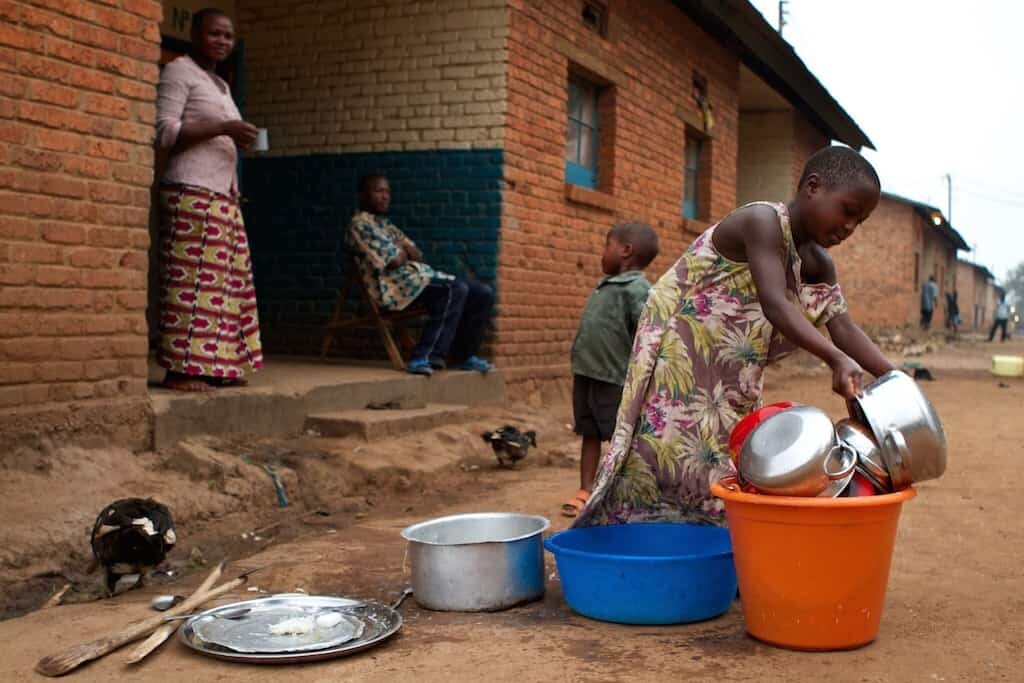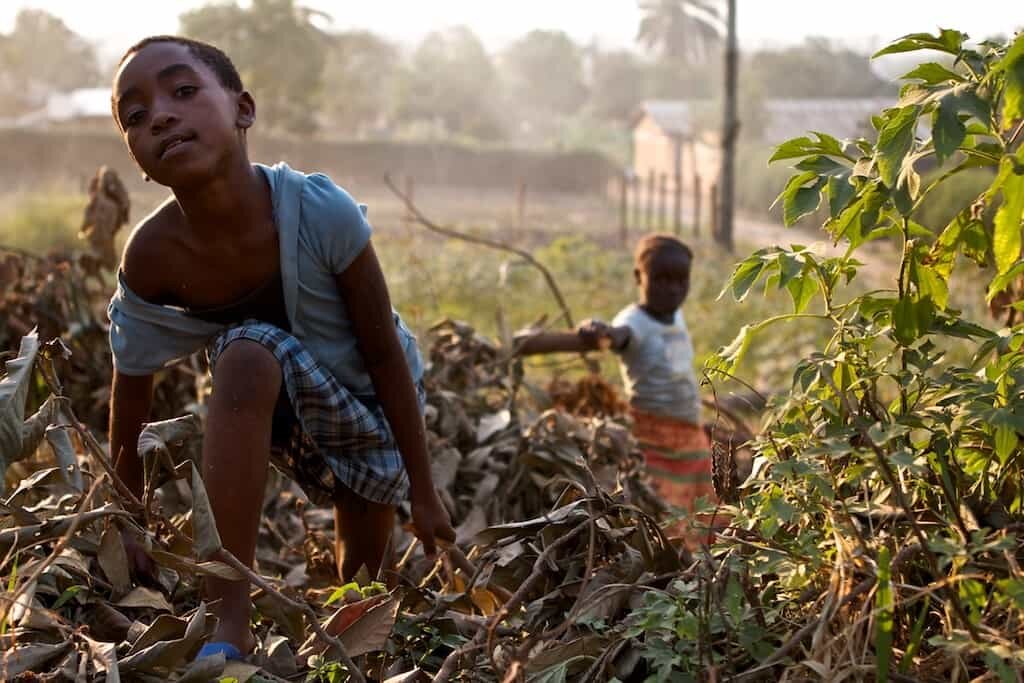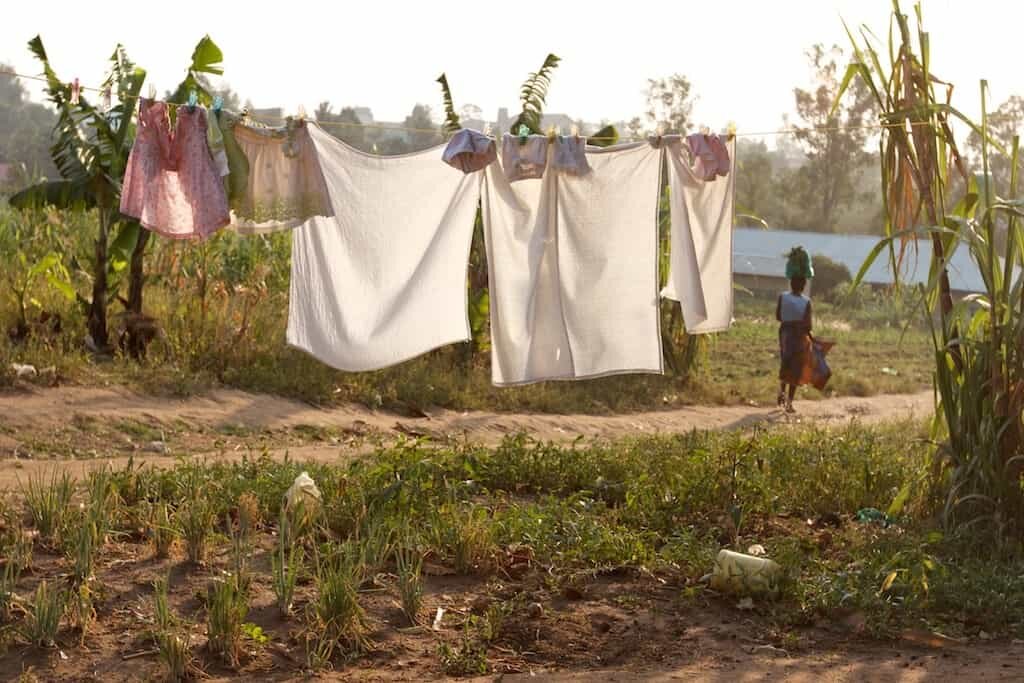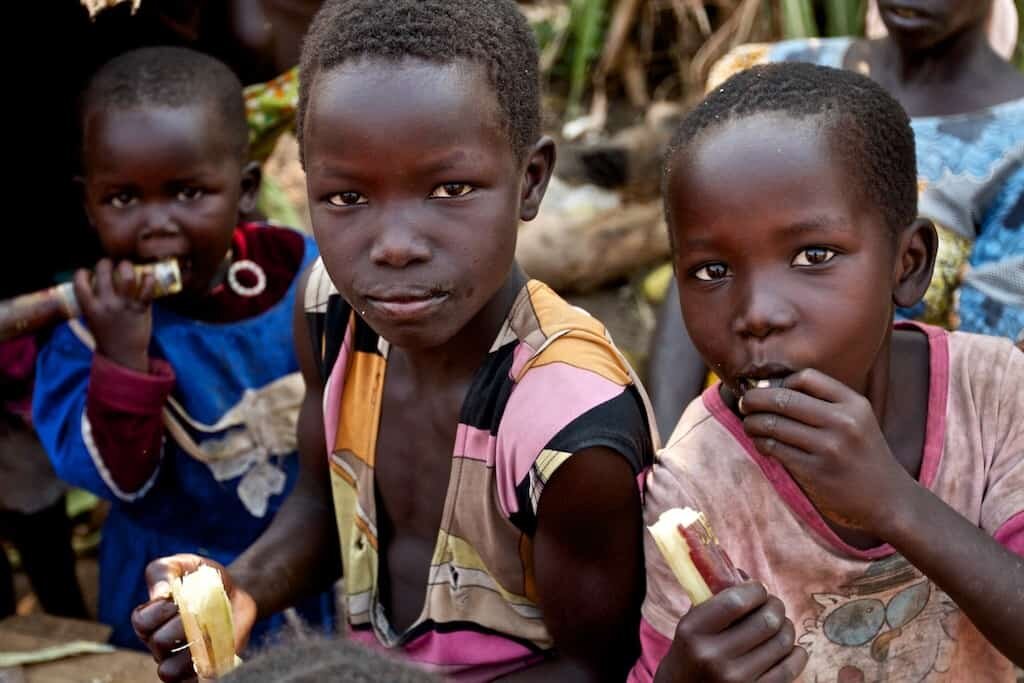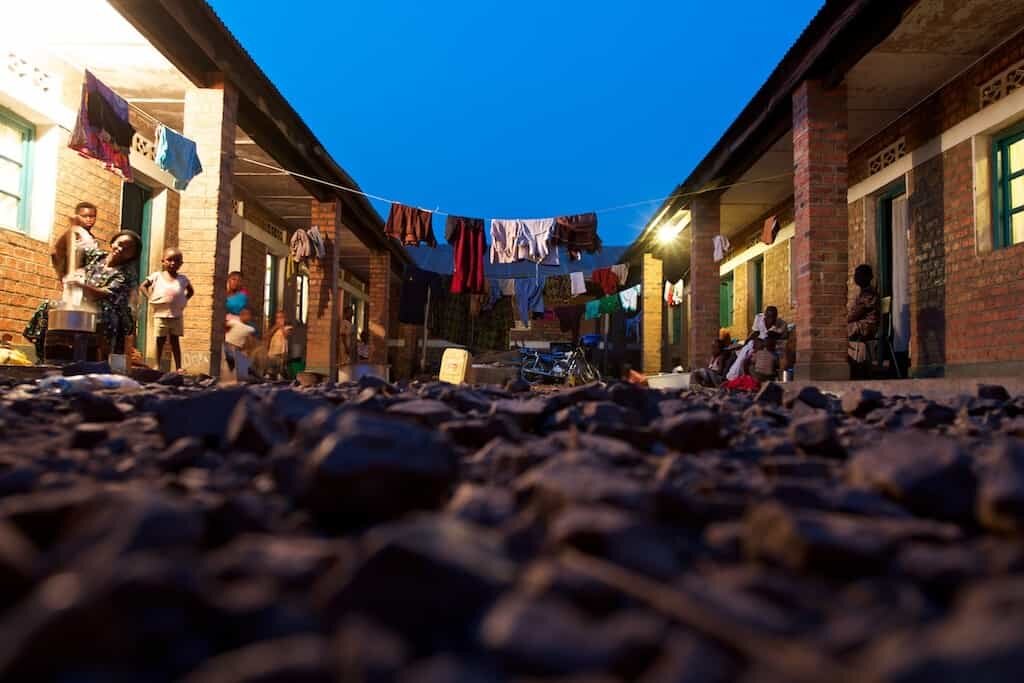Little Village
The varied and vibrant student housing community of Shalom University in Bunia, Democratic Republic of Congo
STUDENT VILLAGE COMMUNITY
The student village is a gathering place, a tightly knit community of families with the common thread of Shalom University. The residents of the student housing village rise early, just like the sun. The day begins with most of the husbands and children going to class and the wives starting on housework. There is bathing, laundry, water gathering and cooking to be attended to every day. The children all run, play, fight, and eat together, ducking into one another’s homes for meals. Family lines are indistinguishable. Everyone is cared for and treated like family. The women work, chat, clean, and cook with one another, sharing life and responsibilites. The men study, talk, and sit with one another after class until night falls. Even though these families are only living together for a few years, the student housing village functions like a connected community.
Students study during any spare moment. Grace studies her notes before taking an exam. Grace lives in the student village with her toddler Kelly. Her husband is away in Uganda working. Other residents help look after Kelly while Grace is in class.
Another student studies before class while his family member pounds a meal with a pestal.
No barber is necessary when a willing friend is available. These students give one another hair cuts after class near their homes on campus. The women, likewise, help braid one another’s hair.
Below: New toys are expensive and rarely seen in the student village. The children are inventive, making their own toys out of used or found objects, including tires, sticks, wire, and plastic.
While their husbands are away at class, the women have their own workload. They are responsible for gathering water, handwashing laundry, cooking all the meals, tending their gardens, cleaning, and caring for the children. Some attend a few classes of their own: English and Bible.
Families staying in campus housing are busy and everyone shares the work. Oftentimes, because the men are predominantly students and unable to work, the women will start small businesses to generate supplemental income for their families. They sell anything from peanuts to frozen juice to popcorn.
The families at Shalom eat a variety of foods including maize, bananas, eggs, pumpkin leaves, manioc root, dried fish, avocado, mandazi, eggplant, beans, stew, and rice.
At right: A woman sorts beans during the afternoon with her daughter. They pick out stones, debris, and rotten beans before they cook it for their family’s evening meal. Quality control happens by hand.
Families gather and wait around one of the communal water tanks in the morning as buckets and jerry cans are filled one by one. There are only a few large water tanks in the village, and they are the main water source for all the families. The student village does not have running water or plumbing in any of the homes. Long waits and shortages are common. Water is precious, and used for nearly every daily chore, including cooking, laundry, cleaning, and watering the garden.
The school has implemented several agriculture programs that are maintained by students and, oftentimes, their families. This is one of their small greenhouses. They also oversee a fish pond and build chicken coops.
A mother hen keeps watch over her chicks near a communal toilet. Chickens, ducks, and guinea pigs are a common sight around the student village. Students use their own mosquito nets to build makeshift enclosures for their animals and plants.
Women gather together to peel a large harvest of manioc root. Manioc, known in other parts of the world as cassava, yuca, and mogo, is a hardy root tuber and drought resistant.
A young boy puts chopped manioc root through a processing machine. The grinding turns the root into flour, which is used for cooking. It is a major carbohydrate souce, and it’s extract is used to make tapioca.
Not all of the children go to school, because their families are already dealing with financial strain. Older siblings often take charge of their younger siblings while their parents are otherwise occupied with school or work. Everyone in the neighborhood looks out for one another, and the ties of community run deep. Adults and children freely wander in and out of each other’s homes.










